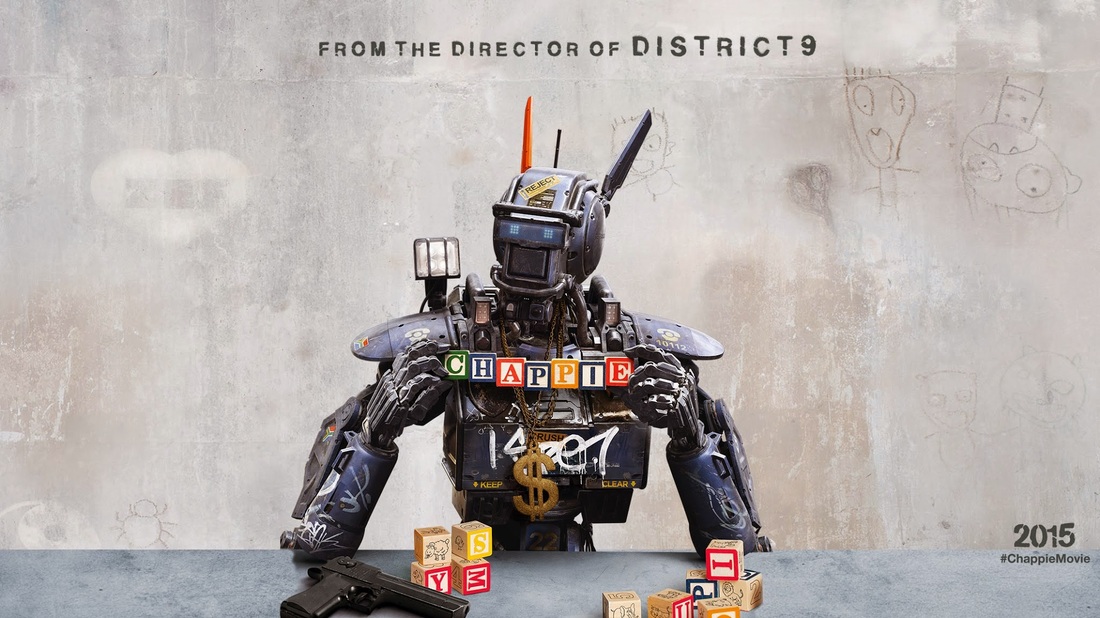This philosophical issue is explored in detail with director Neil Blomkamp’s latest science-fiction film, Chappie. Set in a not-to-distant future in the city of Johannesburg in West Africa, we discover that, due to high crime rates, the law is now enforced by robotic police machines known as “scouts.” Possessing superior firepower, strength, and agility to humans, these intimidating robots turn out to be very effective in lowering and destabilizing criminal activities. When their creator, Deon Wilson (Dev Patel) creates and installs prototype artificial intelligence software into one of these police units—software that allows the robot to possess a human brain filled with emotional and psychological components, the delicate established order becomes upset, and soon the weapon manufacturer responsible for the police droids comes after Deon and his creation—“Chappie."
As mentioned in the introduction, the film investigates what it means to be human and what it means to be “alive.” When Chappie, played brilliantly through motion capture by District 9 (2009) star Sharlto Copley, is first activated, he behaves like a toddler, curiously touching and exploring everything around him. He does not automatically come equipped with adult human intelligence—he has to mentally grow just as a human child grows. For this reason, you will no doubt sympathize and grow attached to this quirky, humorous, and unique being. You end up seeing and identifying him as a human being rather than as an impassive machine. Chappie has emotions—he gets scared and traumatized at times, and the audience feels pain along with him anytime he is mistreated or abused. He realizes that he is different from humans on the outside but the same on the inside. As a result, he tries valiantly to fit in and become one of us—something each of us can identify with as we grew up trying to fit in and become “cool” amongst our friends and peers. We become convinced that Chappie is not just “powered on,” he is living--something that separates him from the other robots and links him with humans. Blomkamp successfully delivers some very touching, emotional and distressing scenes. He certainly is not the first person to investigate the human condition in artificial intelligence, but nevertheless he provides some new elements that make for a thought provoking discussion after the credits roll.




 RSS Feed
RSS Feed
